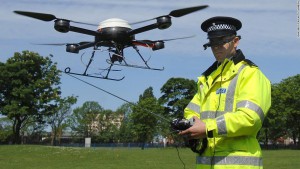
Periodically, DRONELIFE posts a news roundup detailing the intersection of American law enforcement with drones use. This week, we travel across the globe to see how police and UAVs are meshing in India, Australia and Pakistan.
India
Indian police are no strangers to drone use. In January, national police forces deployed drones across the nation to guard against possible uprisings during Republic Day, India’s annual commemoration of the enactment of its constitution in 1950. Delhi Police recently ordered a Netra quadcopter from India’s defense ministry provide surveillance during VIP functions.
Kanpur recently became the latest municipal police force to adopt UAV tech. Police Superintendent Shalabh Mathur tells FirstPost.com that his department will allocate about $15,000 to buy unspecified drone models, largely to address security concerns during large festivals and to monitor traffic snarls.
“Our motive is to provide free flow of traffic, protect the innocent and punish the offenders and a high-tech police force will make it possible,” Mathur said.
Kazakhstan
Shymkent, a capital city of Kazakhstan’s largest province, will also launch a squadron of quadcopters to monitor traffic patterns and accidents. The drones will also be used to records minor road infraction as well as locate stolen vehicles.
“Technical progress dictates new terms. The cameras we have now have limited technical capabilities,” Police Chief Daniyar Meirkhan stated in an interview with AstanTimes.com. “The mobility and compact size of quadcopters give great opportunities to capture any violations on video.”
Australia
Meanwhile, the Land of Oz is debating the validity of police drones with several pundits raising privacy and due-process concerns.
Writing for The Conversation, researcher Omar Mubin laments the fact that, “current privacy laws do not specifically address drones flown by the public or non-governmental organizations, leaving privacy controls largely undetermined and prosecution in the case of misuse somewhat arbitrary.” Mubin points out recent police trials, such as a recently completed program in New South Wales to “be used to hunt for gunmen, search for drugs and even find missing children,” could result in unintended – or even unconstitutional – consequences.
“The main concern is that drones, flown by either the police or the public, could unintentionally capture footage of people going about their normal life,” Mubin states.
Drones are slowly catching on in nearly every region – in Western Australia, police use drones to locate missing prospectors in the aptly-named Goldfields region. According to ABC-Australia, the prospectors often seek their fortune in the more remote areas and at least two have gone missing in the past two weeks. Since manned SAR missions can cost a lot in people power and funds, police officials say drones may provide a more effective and budget-friendly way out.
“As with any other forms of technology, the assimilation and deployment of drones in society will require careful deliberation, proper testing and the establishment of relevant legislation,” Mubin writes.
Jason is a longstanding contributor to DroneLife with an avid interest in all things tech. He focuses on anti-drone technologies and the public safety sector; police, fire, and search and rescue.
Beginning his career as a journalist in 1996, Jason has since written and edited thousands of engaging news articles, blog posts, press releases and online content.
Email Jason
TWITTER:@JasonPReagan
Subscribe to DroneLife here.